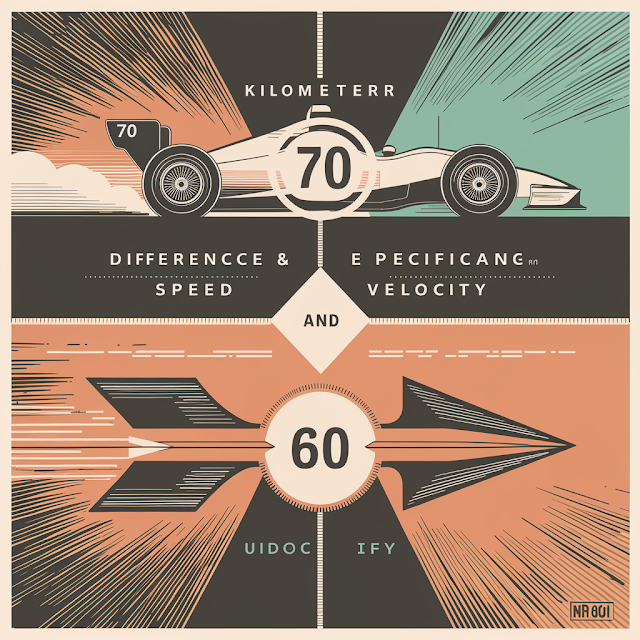What is The Difference Between Speed And Velocity With Example ?
Speed and velocity both describe how fast an object is moving, but they have distinct meanings in physics.
1. Speed:
Speed is a scalar quantity, meaning it only has magnitude (size) and no direction.
It measures how fast an object is moving regardless of the direction it's moving in.
Speed is calculated by dividing the distance traveled by the time taken.
The formula for speed is:
\( \text{Speed} = \frac{\text{Distance}}{\text{Time}} \).
Example:
If a car travels 100 kilometers in 2 hours, its speed would be 50 kilometers per hour (km/h). This value only tells you how fast the car is moving but doesn't indicate the direction.
2. Velocity:
Velocity is a vector quantity, meaning it has both magnitude and direction.
It describes the rate at which an object changes its position.
Velocity indicates not only how fast an object is moving but also in what direction it's moving.
Velocity is calculated by dividing the displacement (change in position) by the time taken.
The formula for velocity is:
\( \text{Velocity} = \frac{\text{Displacement}}{\text{Time}} \).
Example:
If a car travels 100 kilometers east in 2 hours, its velocity would be 50 kilometers per hour (km/h) east. Here, the velocity not only tells you how fast the car is moving but also the direction (east).
In summary, speed is a measure of how fast something is moving without regard to direction, while velocity includes both the speed and the direction of motion.
Certainly! Let's delve a bit deeper into the concepts of speed and velocity, along with additional examples:
1. Speed:
Speed is a scalar quantity, meaning it has magnitude but no direction.
It is always positive or zero.
The average speed is calculated by dividing the total distance traveled by the total time taken.
Instantaneous speed refers to the speed of an object at a specific moment in time.
Example: A person running around a circular track at a constant speed of 8 meters per second. Here, the speed is constant and doesn't vary, so the average speed and instantaneous speed are both 8 m/s.
2. Velocity:
Velocity is a vector quantity, meaning it has both magnitude and direction.
It can be positive, negative, or zero, depending on the direction of motion.
The average velocity is calculated by dividing the total displacement (change in position) by the total time taken.
Instantaneous velocity refers to the velocity of an object at a specific moment in time.
Example: A car traveling northward at a constant velocity of 30 meters per second. Here, the velocity is 30 m/s north. If the car changes direction and starts traveling southward, its velocity becomes -30 m/s (negative indicating direction), still with the same magnitude but in the opposite direction.
Additional points of distinction:
Speed can be calculated without knowing the direction of motion, while velocity requires information about both the speed and direction.
Speedometers in vehicles measure speed, while devices like GPS units can provide information about both speed and direction, giving velocity.
In everyday language, people often use the terms "speed" and "velocity" interchangeably, but in physics, they have specific meanings and units.
Understanding the difference between speed and velocity is crucial in physics and various fields such as engineering, navigation, and sports science.


Post a Comment